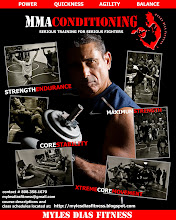.jpg)
Optimum Performance Training
Most training programs have been based almost entirely on the experiences and goals of bodybuilders, coaches, and athletes. Scientifically unsupported training programs are not designed to meet the needs of our increasingly de-conditioned and injury-prone society. The Optimum Performance Training method represents a comprehensive training program based on current scientific research that provides undisputed results specific to individual needs and goals. By incorporating multiple types of training—flexibility, cardiorespiratory, core, balance, reactive, speed, agility, quickness, and strength—into every program, the OPT method improves all biomotor abilities and builds high levels of functional strength, neuromuscular efficiency, and dynamic flexibility.
Individualized Program Design
The OPT method provides an easy-to-use system for exercise selection based on the individuals needs, abilities, and goals. The endless choices of exercises and the unique progressions keep every program fun, dynamic and, most importantly, successful.
Resistance Training
Body Fat Reduction:
The goal of reducing body fat adheres to the simple law of thermodynamics. If you burn more calories than you take in you will lose weight, more calories consumed than burned will result in weight gain, and finally taking in the same calories that you burn will result in no weight difference. There are 3,500 calories in one pound. To lose one pound a week there must be a deficit of 500 calories per day.
Increasing Lean Body Mass:
The goal of increasing lean body mass (hypertrophy) requires increases in caloric intake to exceed the amount of calories that are burned. Similarly, to gain a pound over a seven day period you must consume 500 more calories a day. Training requires knowledge of progressing to higher volumes (set, reps, intensity, and tempo) to force muscles to increase their cellular makeup so that increased size can be produced.
Improving General Performance:
The goal of general performance requires an increase in overall proprioception (internal balance and stabilization mechanisms), strength, and power output and requires knowledge of progression from stabilization through the power phases of training.
Cardiorespiratory Training
All exercise, regardless of the duration and intensity, must use the cardiorespiratory system to either sustain the activity or recuperate from it. The benefits of cardiorespiratory training
Increases:
- Flexibility
- Work, recreation, and sports performance
- Sense of well-being
- Blood lipid profile
- Insulin sensitivity
- Glucose tolerance
- Immunity
Decreases:
- Daily fatigue
- Anxiety
- Depression
- Coronary Artery Disease
- Hypertension
- Non-Insulin-dependent diabetes mellitus
- Cancer
- Osteoporosis
- Obesity
Core Training
The core is the beginning point for movement and is the center of gravity for the body. It consists of the lumbo-pelvic-hip complex, and the thoracic and cervical spine. An efficient core is necessary for maintaining proper muscle balance throughout the entire kinetic chain.
The musculature of the core is divided into two categories: stabilization and movement systems. The stabilization system is responsible for the stability of the lumbo-pelvic-hip complex, whereas the movement system is responsible for movement, force production and force reduction of the core. Training should always begin from the inside (stabilization system) then out (movement system). If the core's movement system musculature is strong and the stabilization system is weak, the kinetic chain senses the imbalance and forces are not transferred or used properly.
Flexibility Training
Flexibility training has the benefits of improving muscle imbalances, increasing joint range of motion and extensibility, relieving excessive tension of muscles and joint stress, and improving neuromuscular efficiency and function. Poor posture and repetitive movements may create dysfunctions in connective tissue, initiating the cumulative injury cycle. Tissue trauma creates inflammation, which leads to micro spasms and decreases normal elasticity of the soft tissue. This can all lead to decreased neuromuscular control which will have long reaching effects on the body. Flexibility training should be progressive, systematic, and based on an assessment by fitness professional.
Balance Training
Balance is key to all functional movement. Maintenance of postural equilibrium is an integrated, dynamic process requiring optimal muscular balance, joint dynamics, and neuromuscular efficiency. By training in a multisensory environment, there will be more of a demand on the nervous systems' ability to activate the right muscles at the right time in the right plane of motion. Balance training programs must be systematic and progressive to allow the body to improve stability, strength, and power. Evidence based research has shown balance training to help in injury prevention, and enhancement of performance.
Sport Specific Training
Reactive Training Defined
Exercises that use quick, powerful movements involving an eccentric contraction immediately followed by an explosive concentric contraction. Reactive training provides the ability to train specific movement patterns in a biomechanically correct manner at a more functionally appropriate speed.
This provides better functional strengthening of the muscle, tendon, and ligaments to meet the demands of specific sports activities. Enhanced performance during sports activities emphasizes the ability of muscles to exert maximal force output in a minimal amount of time which is also know as the rate of force production. Success in most sports specific training depends on the speed at which muscular force is generated. Power and neuromuscular control represents a component of function. It is perhaps the best measure of success in activities that require rapid force production as most sports do. The speed of muscular exertion is limited by neuromuscular coordination.
This means that the body will only move within a range of speed that the nervous system has been programmed to allow. Reactive training improves neuromuscular efficiency and improves the range of speed set by the central nervous system. Optimum reactive performance of any activity depends on the speed at which muscular forces can be generated. It is important that reactive training should only be incorporated once athletes have developed proper flexibility, core, and balance capabilities. This reiterates the importance of employing a fitness professional to systematically and progressively design sports specific training regimens.
Special Need Programs
In addition to the general populations training needs, Myles is certified to provide training programs designed for special needs populations such as youth, seniors and clients with medical conditions that include but not limited to pregnancy, cancer,osteoporosis and arthritic conditions.
Myles Dias Fitness will provide specialized work out programs to fit your needs! Call or send an email to Myles to make an appointment for your free assessment and evaluation! No better time to find out what level of physical fitness you can achieve!!!
Let MYLES DIAS FITNESS take you there!
Credit: NASM Essentials of Personal Fitness Training: course manual-3rd ed.







